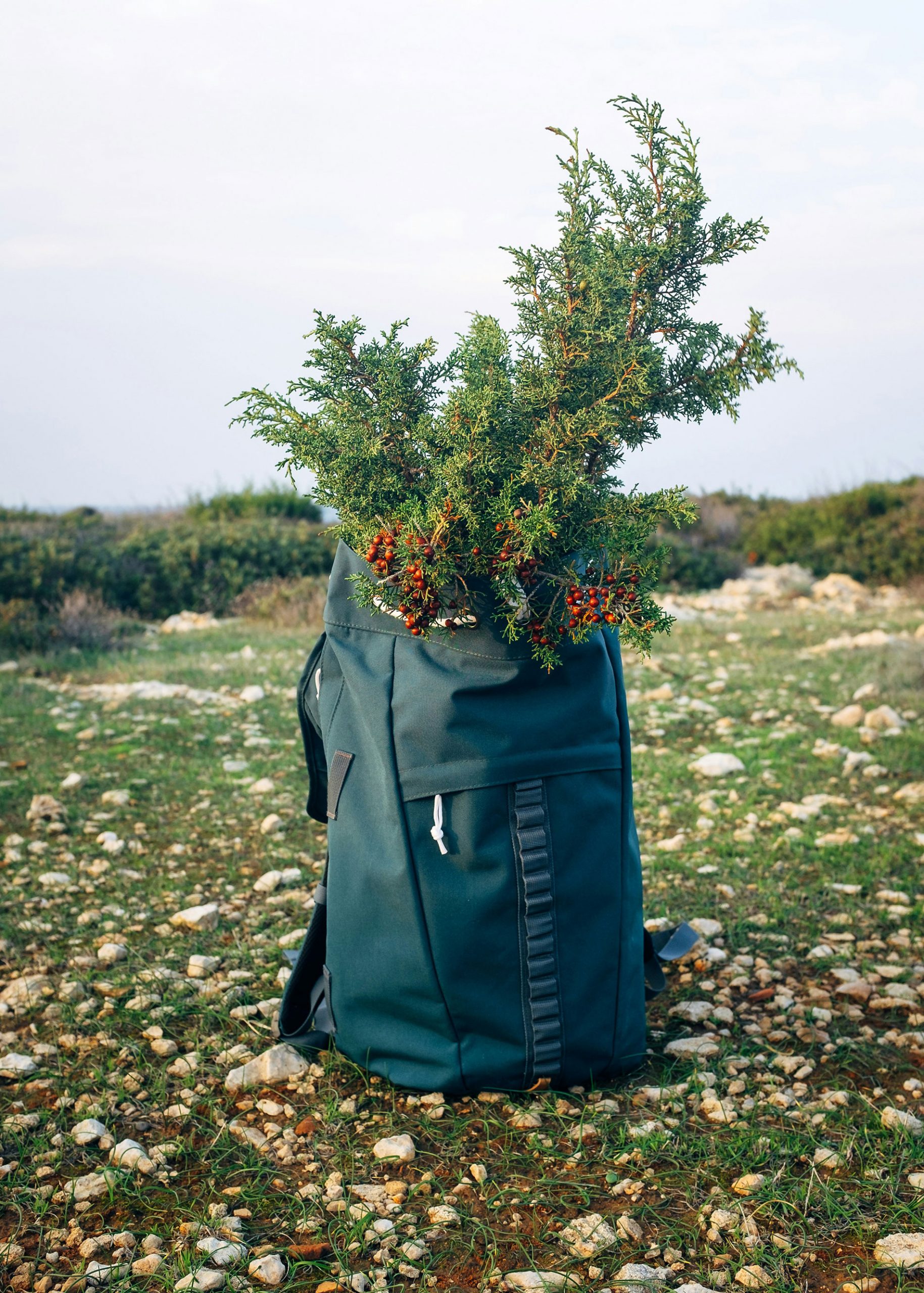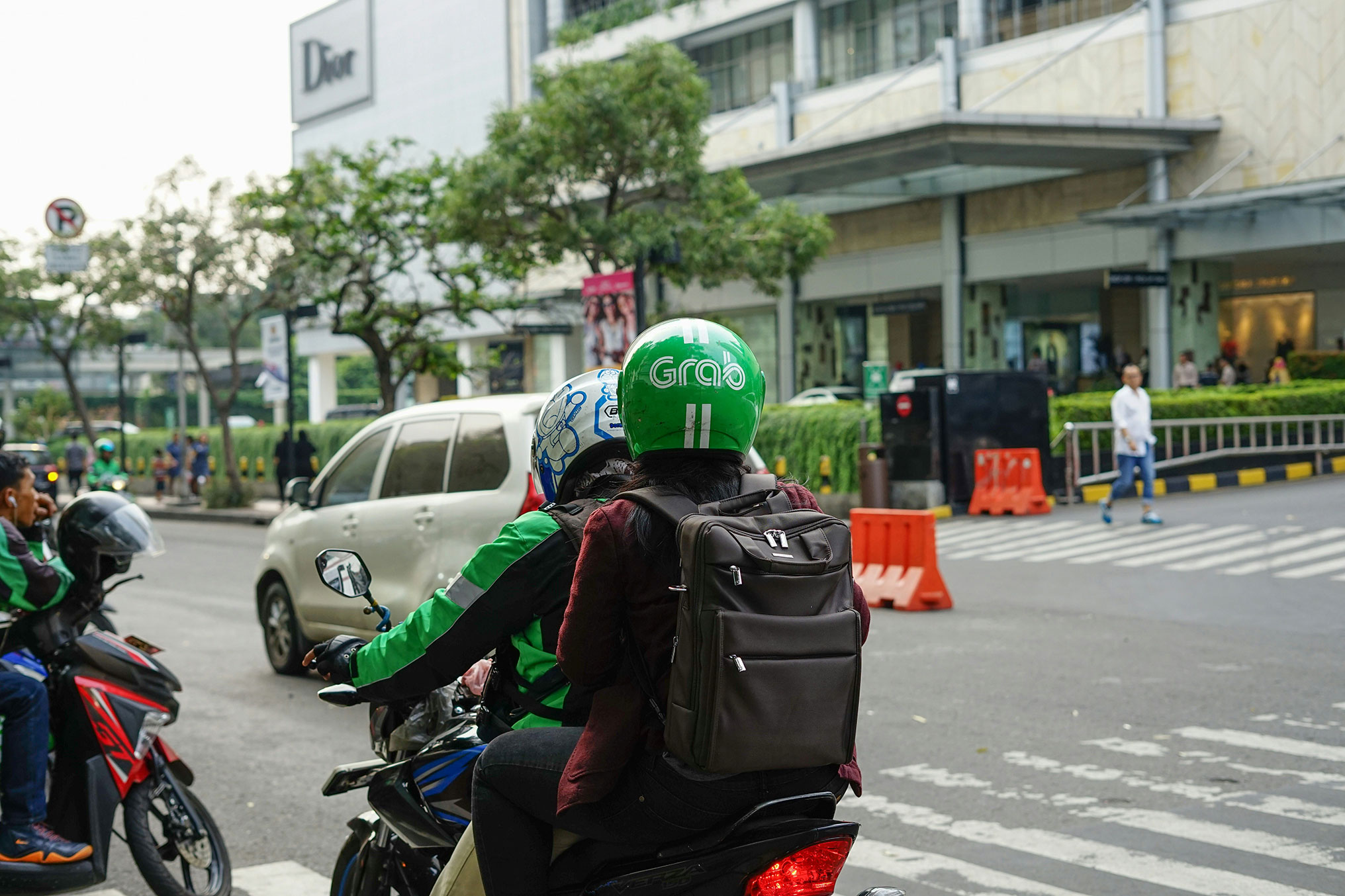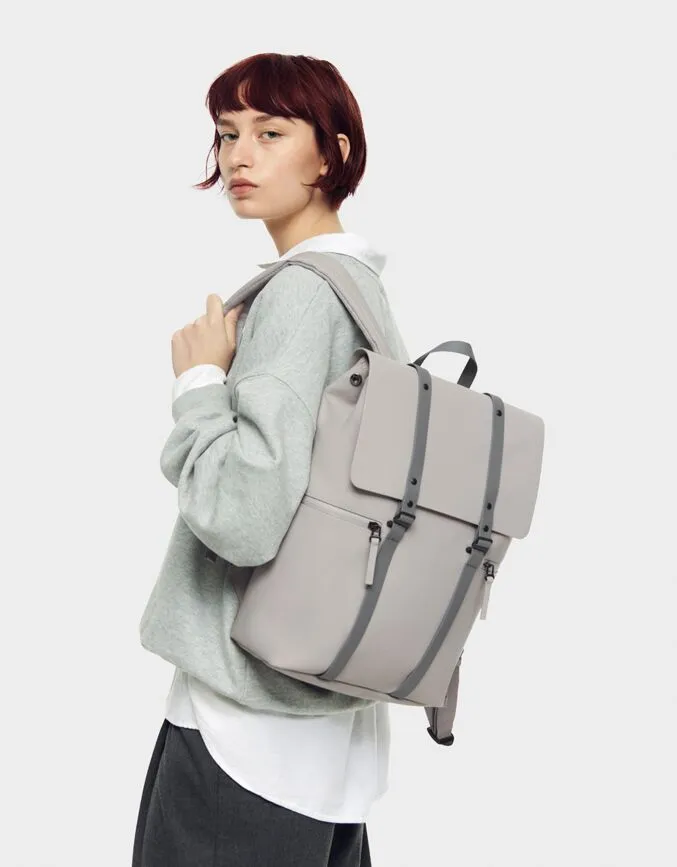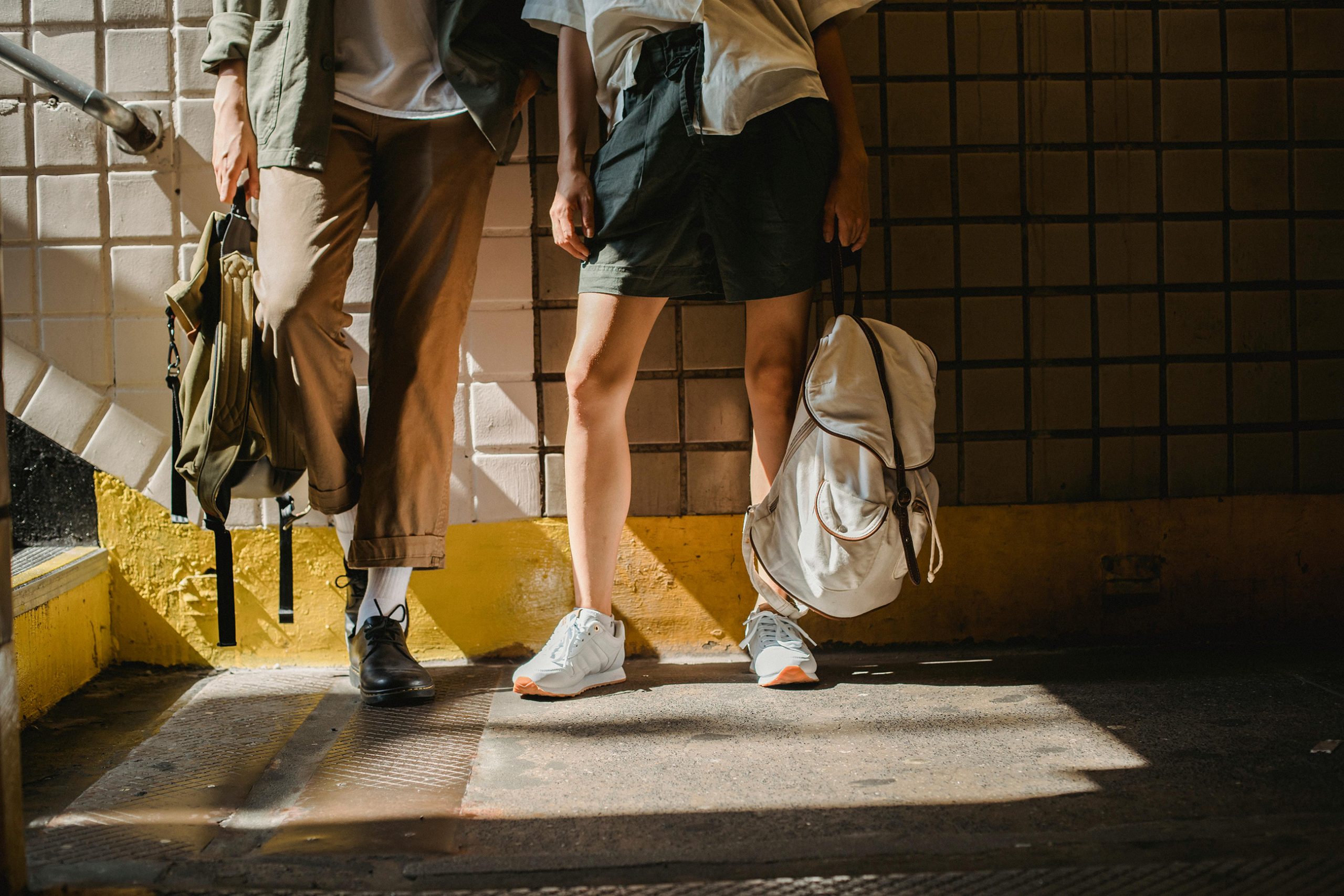Want a backpack that’s good for you and the planet? Sustainable backpacks are the answer. We’ve looked into the newest eco-friendly materials and tried out some top brands to help you find a bag that works great and is kind to the Earth.
Backpacks Go Green
Backpack makers are getting serious about sustainability. It’s not just a sales pitch. Now, you can find bags made from up to 29 recycled bottles. This turns trash into something that works just as well as regular materials.
To be truly sustainable, a backpack should be made from things like recycled canvas, cork, or cotton grown without harsh chemicals. It should also use safe dyes and printing methods.
This isn’t just about feeling good. It’s about real change. Old plastic bottles can become strong, light material. This process also uses less energy and water and makes less pollution than making regular polyester.
What Makes a Backpack Sustainable?
Recycled Fabrics: Giving Trash a New Life
Turning Plastic into Something New
Turning plastic bottles into fabric is a great example of reusing materials. The bottles are collected, cleaned, and turned into fibers. These fibers can be even stronger than brand-new materials.
Cleaning Up the Oceans
Some companies are using materials from ocean cleanup projects. This helps reduce ocean pollution while making high-quality fabrics. It also helps fund important cleanup efforts.
Recycled Materials That Work
Recycled nylon and polyester are just as good as, or even better than, regular materials:
- Strong: They resist tears just as well.
- Weather-Ready: They keep water out better.
- Light: They often weigh less.
- Colorful: They resist fading from the sun.
Natural Materials: Old-School Sustainability
Cotton That’s Grown the Right Way
Organic cotton is grown without harmful chemicals, which protects the soil and water. It’s also:
- Breathable: It feels good against your skin.
- Soft: It’s comfortable to carry.
- Biodegradable: It breaks down naturally.
- Good for Farmers: It supports farming that’s good for the land.
Hemp: A Strong Choice
Hemp doesn’t need much water to grow and helps the soil. It’s also:
- Antimicrobial: It resists germs.
- Super Strong: It’s tougher than cotton.
- UV Resistant: It resists sun damage.
- Fast Growing: It grows quickly, so it’s easily renewed.
Wool That’s Responsibly Made
Wool from farms that treat animals well is warm, keeps moisture away, and lasts a long time. New ways of treating wool make it easy to care for.
New Plant-Based Materials
Cork: A Great Idea from Portugal
Harvesting cork doesn’t hurt the trees. Cork is naturally waterproof, light, and strong. It’s also:
- Water-Resistant: It keeps your stuff dry.
- Antimicrobial: It resists germs.
- Unique: It looks cool.
- Renewable: It can be harvested every nine years.
Turning Farm Waste into Something Useful
Materials like pineapple leather, AppleSkin, Mushroom Leather, and kraft paper are becoming good replacements for materials made from oil.
Plant-Based Plastics
Some companies are making backpack parts from corn and sugar. This cuts down on the need for oil and still works well.
How It’s Made Matters
Fair Labor: Treating Workers Right
A truly sustainable backpack isn’t made by mistreating workers. The best brands make sure of the following:
Safe Workplaces and Fair Pay
They make sure workers are safe, paid fairly, and checked on regularly by outside groups.
Certifications to Look For
- Fair Trade Certified: Guarantees fair pay and safe conditions.
- B Corp Certification: Means a company meets high standards for social and environmental responsibility.
- SA8000 Certification: Checks that workplaces meet international standards.
Knowing Where Things Come From
Bellroy, a B Corp from Australia, uses recycled materials and leather that’s made in a responsible way. They make sure their backpacks are comfortable, organized, and reliable. They also check on their suppliers to make sure workers are safe.
Making Things Closer to Home
Benefits of Local Production
Making things locally has many benefits:
- Less pollution from shipping
- Support for local jobs
- Easier to check quality
- Faster improvements to design
- Keeps traditional skills alive
Bringing Jobs Back Home
Many brands are moving production closer to where they sell their products. This balances costs with being good to the environment.
Backpacks That Last
Easy to Repair: Avoiding Throwaway Culture
Design That Makes Sense
The best backpacks are made so you can replace parts:
- Zippers that are easy to replace
- Linings that can be removed and washed
- Buckles that can be swapped out
- Seams that can be fixed
Spare Parts Readily Available
The best brands have spare parts and instructions for repairs. This can make a backpack last for years.
Helpful Guides and Support
Patagonia and Fjällräven, for example, offer lots of help:
- Video tutorials
- Mail-in repair services
- Partnerships with local repair shops
- Advice for customers
Styles That Last
Timeless Design
Sustainable backpacks focus on classic looks, not just what’s trendy:
- Simple, useful shapes
- Colors that go with everything
- Designs that stay in style
- High-quality construction that looks good over time
Worth the Investment
Good materials and construction mean a backpack will look better as it ages.
Reusing and Recycling
Take-Back Programs: Brands Taking Responsibility
Closing the Loop
Some brands have programs to take back old products:
- Patagonia Worn Wear: Fixes and resells used gear.
- The North Face Renewed: Repairs and resells items.
- Arc’teryx ReBird: Resells and recycles products.
Rewarding Customers for Recycling
Many brands offer discounts if you return your old gear.
Parts That Can Be Upgraded
Backpacks That Grow with You
Some companies are making backpacks with parts you can change:
- Inserts for organizing
- Removable compartments for electronics
- Systems for expanding capacity
- Accessories for different seasons
Designed for the Future
Good design means a backpack can adapt to your needs without having to be replaced.
Certifications: How to Know What’s Real
Global Recycled Standard (GRS)
Labels like GOTS, Fair Trade Certified, Bluesign, and Oeko-Tex Standard 100 help you find products that are truly sustainable.
GRS Verification
This checks that a product contains recycled materials and tracks where those materials came from.
bluesign® Approval
This makes sure that a product is made without harmful chemicals, protecting workers and the environment.
Cradle to Cradle Certification
This measures how sustainable a product is in terms of:
- Safe materials
- Renewable energy
- Water use
- Social fairness
- Reusing materials
GREENGUARD Gold Certification
This ensures that a product doesn’t release harmful chemicals, which is important for things used indoors.
Performance: Being Green Doesn’t Mean Sacrificing Quality
Testing for Durability
Real-World Tests
Sustainable materials need to be as good as regular materials:
- Abrasion Resistance: Can they withstand being rubbed against rocks and rough surfaces?
- UV Degradation: Can they handle sun exposure?
- Temperature Cycling: Can they perform in hot and cold conditions?
- Water Resistance: Can they keep water out without using harmful chemicals?
Designed to Last
The best backpack is the one that lasts the longest. Top brands test their products to ensure they’re reliable for years.
Water Resistance Without Harmful Chemicals
PFC-Free Protection
Many water-resistant treatments use harmful chemicals. Sustainable options include:
- Wax: A natural way to keep water out.
- Silicone: A safe, long-lasting option.
- Tight Fabrics: Weaving fabrics tightly so they naturally repel water.
- Plant-Based Coatings: Protective treatments made from plants.
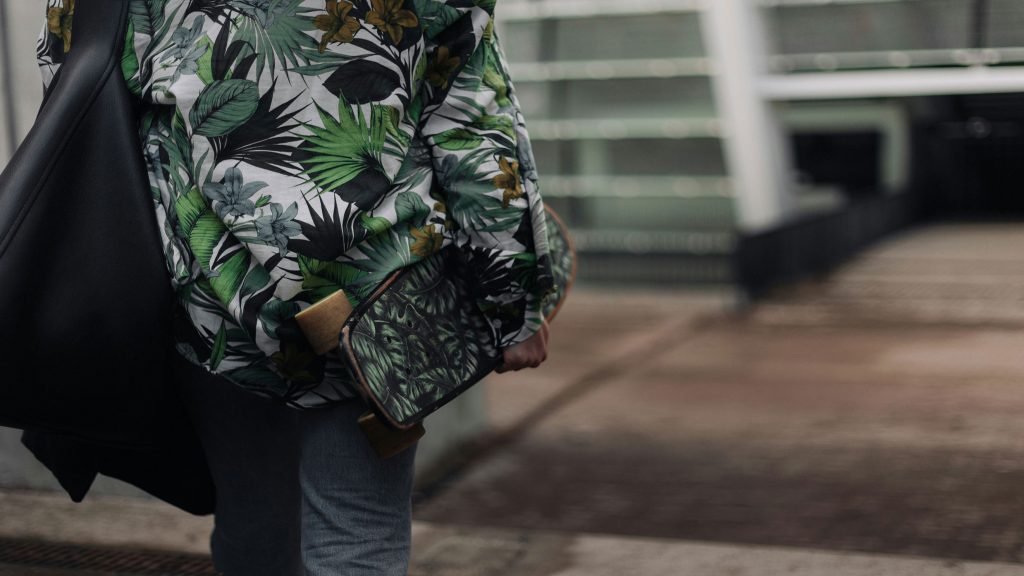
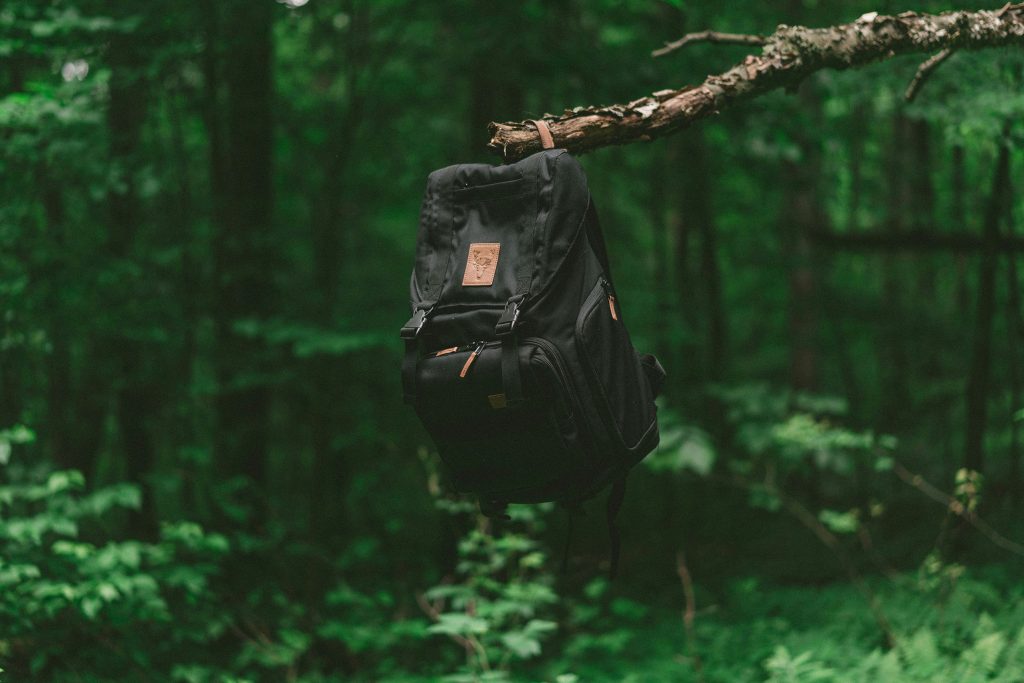
The Top Sustainable Brands
Patagonia: Leading the Way
Committed to the Environment
Patagonia uses recycled materials whenever they can. They also try to reduce waste in their manufacturing.
Great Products:
- Ironwood 20L Backpack: Made from recycled polyester. It’s a great choice for travel or everyday use.
- Arbor Grande Pack 32L: Made from recycled nylon and comes with a lifetime repair guarantee.
- Refugio Pack 28L: Designed for city use with recycled materials.
Why Patagonia Is a Leader:
- They’re active in environmental causes.
- They have great repair programs.
- They’re open about their supply chain.
- They’re always finding new ways to use recycled materials.
Where to Buy: Patagonia Official Store | REI Co-op
Fjällräven: Scandinavian Style
Focus on Materials
They use materials like recycled wool, organic hemp, and Tencel®. They also use recycled polyester and wool that can be traced back to the source.
Great Products:
- Kånken Re-Kånken: Made from 11 recycled plastic bottles.
- Greenland Zip: Made from organic cotton and recycled polyester.
- Vardag 25: Light, water-resistant, and made from recycled materials.
Why Fjällräven Is Excellent:
- They’re open about where their materials come from.
- They design products to be durable.
- They offer repair services.
- Their products are tested in the Arctic.
Where to Buy: Fjällräven Official Store | Backcountry
Bellroy: Australian Innovation
A Certified B Corp
Bellroy meets high standards for social and environmental responsibility. They use recycled materials and leather that’s made responsibly.
Great Products:
- Transit Backpack: Made from premium recycled materials with a lifetime guarantee.
- Classic Backpack Plus: Made from a combination of sustainable leather and fabric.
- Apex Backpack: Packed with features and made with the environment in mind.
Why Bellroy Stands Out:
- They’re a certified B Corp.
- They use high-quality materials.
- Their products are well-organized.
- They have a unique Australian design.
Where to Buy: Bellroy Official Store
Other Great Brands
Madlug: 100% Recycled
Their backpacks are made from 100% recycled plastic and are water-resistant.
Where to Buy: Madlug Official Store
Solo NY: Sustainable Business
They turn plastic bottles into high-quality, lightweight material.
Where to Buy: Solo NY Eco-Friendly Collection
State Bags: Giving Back
For every purchase, they support students in need in America.
Where to Buy: State Bags Official Store
Types of Sustainable Backpacks
For City Commuters
Key Features:
- Professional look
- Laptop protection
- Good organization
- Weather resistance
- Comfortable
Top Picks:
- Bellroy Transit Backpack: High-quality materials, great organization.
- Patagonia Arbor Grande: Stylish for the city, but tough enough for the outdoors.
- Fjällräven Greenland Zip: Scandinavian design for city life.
For Outdoor Adventures
Key Features:
- Weather protection
- Lightweight
- Good organization
- Places to attach gear
- Durable
Top Picks:
- Patagonia Refugio 28L: Great for both outdoor and city use.
- Fjällräven Kånken: Classic design with recycled materials.
- Osprey Arcane Large Day: Made with recycled materials.
For Students
Key Features:
- Room for books
- Laptop protection
- Comfortable
- Durable
- Affordable
Top Picks:
- State Bags Lorimer: Helps students in need.
- Madlug Eco Backpack: Made from 100% recycled materials and budget-friendly.
- Patagonia Ironwood 20L: Sustainable and compact.
For Travelers
Key Features:
- Fits in overhead bins
- Secure
- Weather-resistant
- Good organization
- Stylish
Top Picks:
- Fjällräven Vardag 25: Great for travel with recycled materials.
- Bellroy Apex: Packed with features and sustainably made.
- Patagonia Black Hole 32L: Super durable with recycled materials.
Why Sustainable Backpacks Matter
Environmental Impact
Regular Backpacks:
- Use more energy to make.
- Use more water.
- Made with harmful chemicals.
- Often made far away.
Sustainable Backpacks:
- Use less energy.
- Save water.
- Made cleaner.
- Reduce waste.
Social Impact
Problems with Fast Fashion:
- Workers are mistreated.
- Unsafe working conditions.
- Low wages.
- Workers have few rights.
Sustainable Brands:
- Pay fair wages.
- Invest in worker safety.
- Are open about their supply chains.
- Have long-term relationships with suppliers.
How to Choose the Right Backpack
Questions to Ask
Materials:
- How much of the backpack is recycled or renewable?
- Are the recycled materials certified by a third party?
- What kind of recycled materials are used?
- Were any harmful chemicals used to make it?
Manufacturing:
- Where was the backpack made?
- What labor standards does the company follow?
- Are there certifications for working conditions?
- Does the company check on its suppliers?
Longevity:
- What kind of warranty does the company offer?
- Can you get replacement parts?
- Does the company offer repairs?
- How long has this backpack model been around?
End-of-Life:
- Does the company have a take-back program?
- Can the materials be recycled?
- Can the parts be taken apart for recycling?
- What happens to returned products?
Red Flags
Watch Out For:
- Claims that sound too good to be true
- No certifications
- Not much information about where materials come from
- Not being open about their supply chain
- Using images of nature to seem eco-friendly without actually being so
Quality Issues:
- Prices are too low to be sustainable
- Limited or no warranty
- Bad customer reviews
- The model changes often
- No repair options
The Future of Backpacks
New Technologies
Bio-Based Materials:
- Leather made from mushrooms
- Alternatives to plastic made from algae
- Flexible materials made from bacteria
- Leather grown in labs
Circular Design:
- Designs that can be taken apart
- Systems for tracking materials for recycling
- Tracking supply chains with technology
- Using technology to choose the best materials
Performance:
- Materials that can heal themselves
- Materials that adapt to conditions
- Solar charging
- Parts that break down naturally
Industry Trends
Changes in Laws:
- Requiring companies to take responsibility for their products
- Rules about chemicals
- Laws about the right to repair
- Requirements to report carbon footprint
What Consumers Want:
- More knowledge about sustainability
- Willingness to pay more for sustainable products
- Open supply chains
- Local production
Is It Worth the Cost?
Price
The Cost Up Front:
Sustainable backpacks often cost more, but this is because:
- They use better materials.
- They’re made ethically.
- Companies invest in research and development.
- They’re produced on a smaller scale.
- They come with warranties.
The Long-Term Value:
- Durability: They often last longer.
- Warranty: They come with repair guarantees.
- Resale Value: They hold their value.
- Environmental: They reduce waste.
When Does It Pay Off?
The Break-Even Point:
Most sustainable backpacks become cheaper than regular backpacks within a few years because they:
- Don’t need to be replaced as often
- Come with warranties
- Are better to use
- Are better for the environment
Taking Care of Your Backpack
How to Clean
- Use cleaners that are eco-friendly.
- Avoid harsh chemicals.
- Follow the care instructions.
- Clean it regularly to avoid big repairs.
How to Store
- Store it properly to avoid damage.
- Keep it in a climate-controlled place.
- Keep it out of direct sunlight.
- Make sure it’s well-ventilated.
Repairs
- Sew small tears.
- Fix or replace zippers.
- Replace hardware.
- Reapply waterproofing.
Professional Help:
- Use manufacturer repair programs.
- Find local repair shops.
- Mail it in for service.
- Use your warranty.
Conclusion
Sustainable backpacks prove that you don’t have to compromise between being eco-friendly and getting a great product. Modern backpacks made from recycled materials are a great choice for travel, outdoor adventures, or everyday use.
The brands that are leading the way understand that sustainability is about making products that last, are made ethically, and are disposed of responsibly. When you choose a sustainable backpack, you’re investing in a better future.
Key Points:
- Better Materials: Recycled and plant-based materials work just as well as traditional materials.
- Brand Leaders: Companies like Patagonia and Fjällräven show that sustainability and quality go together.
- Long-Term Value: Sustainable backpacks are worth the cost because they last longer and come with warranties.
- Designed to Last: The best backpacks are designed to be repaired instead of replaced.
- Real Impact: Certifications help you know which products are truly sustainable.
Choosing a sustainable backpack is a way to align your values with your gear. It’s the right choice for you and the planet.
Good backpacks provide years of use while being good to the environment. The future of backpacks is green.
#SustainableBackpacks #EcoFriendlyGear #RecycledMaterials #SustainableFashion #GreenLiving #EthicalManufacturing #EnvironmentallyFriendly #SustainableTravel #EcoConscious #CircularEconomy #ZeroWaste #ResponsibleConsumption #GreenProducts #SustainableDesign #EcoWarrior #ClimateAction #SustainableLiving #EnvironmentalImpact #EthicalShopping #GreenTech
